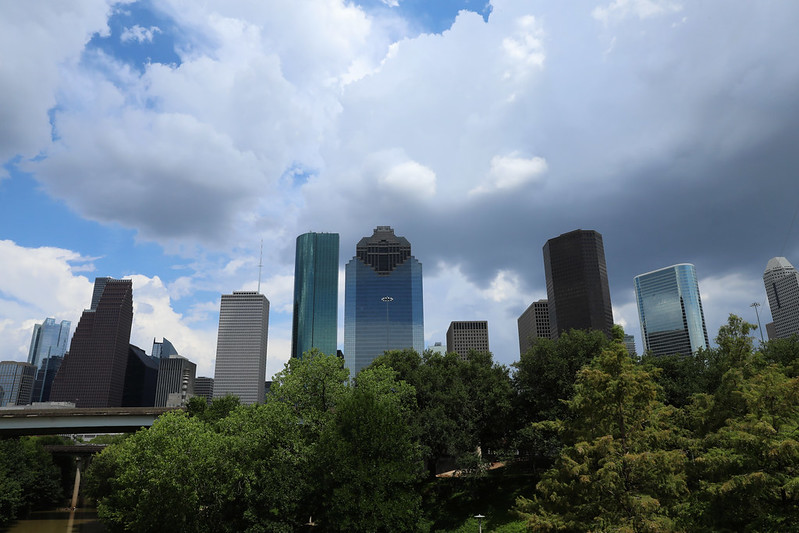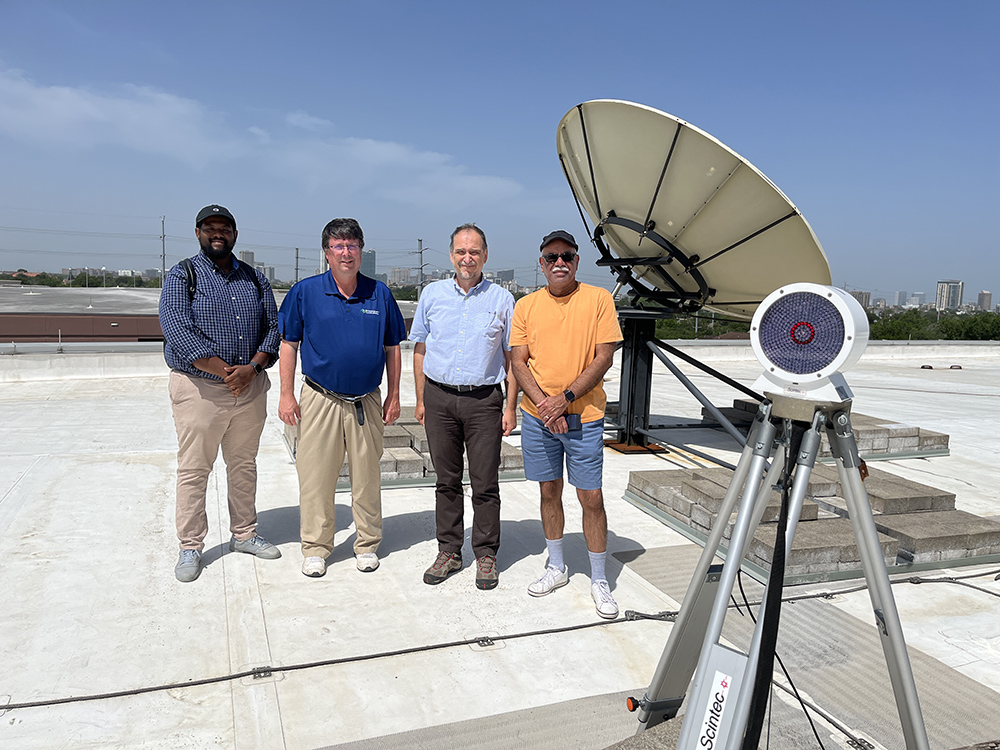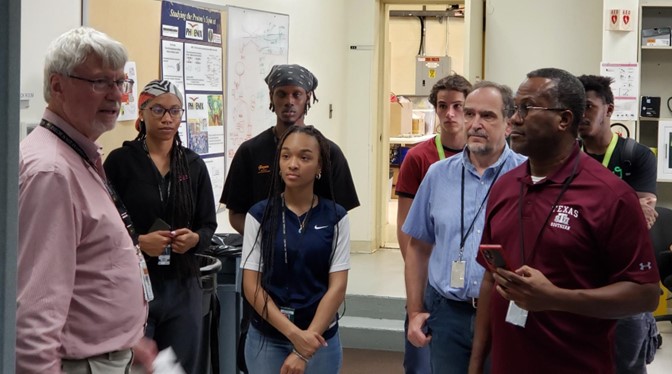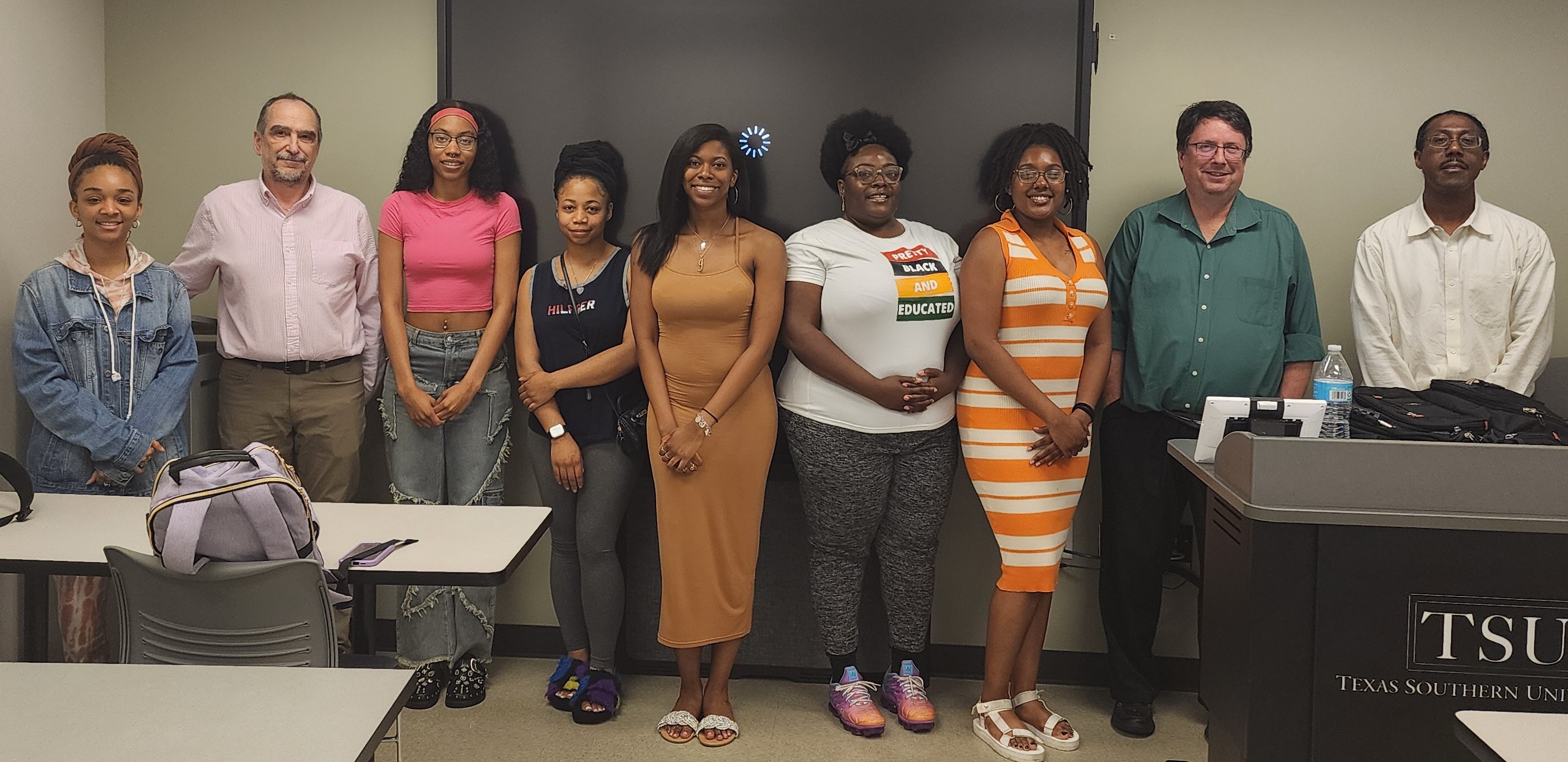Daniel Vrinceanu: Champion of Science for the Underrepresented
Published: 19 June 2024
An atomic physicist at Texas Southern University champions an emerging program in atmospheric science
Editor’s note: The original version of this article appeared on the Atmospheric System Research program website.

Born in Romania amid a culture that honors the pursuit of science and mathematics, Texas Southern University (TSU) atomic physics professor Daniel Vrinceanu is a career-long expert in atomic and molecular physics and computational physics. Among other things, he has investigated exoplanet atmospheres and a class of atoms with exaggerated properties (like their large size) found only in the ultracold regions of outer space between stars.
Lately, he has brought his academic sights down to Earth.
In the fall of 2023, Vrinceanu and three other TSU colleagues were awarded a full three-year grant for their proposed “Partnership for Fostering Graduate Training in Atmospheric Sciences at Texas Southern University.” It’s part of a U.S. Department of Energy (DOE) initiative called Reaching a New Energy Sciences Workforce (RENEW).
With this boost from RENEW, TSU will take the first steps in creating the first atmospheric science program at this historically Black institution of higher learning in Houston, Texas.
RENEW will provide TSU chemistry and physics students opportunities for experiential training, mentoring, and data analysis.
Through a partnership with Brookhaven National Laboratory (BNL) in New York, TSU students taking part in the initiative will support a science focus area (SFA) called Process-level AdvancementS of Climate through Cloud and Aerosol Lifecycle Studies (PASCCALS). The SFA is funded by DOE’s Atmospheric System Research (ASR) program.
In addition, some participants in TSU’s RENEW project will use data from DOE’s Atmospheric Radiation Measurement (ARM) user facility. ARM maintains fixed and mobile atmospheric observatories in climate-critical regions of the world.
A TRACER Preview

In the summer of 2022, Vrinceanu and a cohort of interested students got a handy preview of atmospheric science during an intensive operational period for a yearlong ARM field campaign called the TRacking Aerosol Convection interactions ExpeRiment (TRACER). In and around Houston, dozens of scientists and technicians collected data on the evolution of clouds and aerosols that feed the coastal region’s famously epic convective storms.
“Convective” describes the meteorological results—heavy rains, fierce winds, and bouts of hail—caused by destabilizing rapid updrafts and downdrafts from convection (heat transfer) in the atmosphere.
Aerosols are tiny particles in the air that make clouds and rain possible. Whether from pure or polluted environments, aerosols play a big role in initiating and growing storm clouds.
The Houston area’s aerosol influences include pristine sea breezes from the Gulf of Mexico, heavy industry to the east of the city, pollution sources in the city center, and regional farms and ranches.
TRACER and related campaigns, with a variety of fixed and mobile instrument systems, lasted from October 2021 through September 2022—an all-season interval designed to capture a full year of data on atmospheric processes linked to convective storms.
‘Every Student Is Different’

TRACER seemed like the opportunity for TSU students to dive straight into the world of atmospheric science. Students there studied physics and chemistry, but they had no way to apply these disciplines to interrogating the atmosphere.
During the summer intensive operational period, TSU students fanned out among the climate science experts to launch radiosonde balloons and help maintain complex sensors.
They were curious about this new path of inquiry, says Vrinceanu, who this fall anticipates two new courses in atmospheric science to appear in physics and chemistry course listings.
“Every student is different,” says Vrinceanu.
One wants to be a television meteorologist. Others are curious about “the geography of pollutants,” he says.
They are motivated by concerns over air quality, pollution disproportionately affecting low-income populations, the outsized effect of severe storms on minorities, and broader questions of environmental justice.
From Brookhaven, an Invitation
All this started during the COVID-19 pandemic.
In 2020, Vrinceanu and other TSU faculty members used a DOE research and development pilot program to explore the idea of expanding study opportunities for students. Noel Blackburn, chief diversity officer at BNL, then suggested starting a DOE-sponsored mentoring partnership.
Vrinceanu remembers thinking: “Look, we don’t have an atmospheric science program. We don’t have much history (in that field). It was nice talking to you.”
Then things took a turn. BNL meteorologist Michael Jensen stepped in, urging TSU faculty to pursue a dialogue and common points of scientific interest.
Jensen was not only head of BNL’s Cloud Processes and Measurement Science group but also TRACER’s principal investigator.
“He encouraged us to apply” for further DOE funding, says Vrinceanu, who was joined in the eventual RENEW grant by three TSU faculty co-investigators: Mark Harvey (nuclear physics), Bruce Prince (chemistry), and Victor Migenes (astrophysics). “We discovered we can actually do things together.”
Along the way, Jensen invited Vrinceanu and others to visit TRACER observation sites. (One set of instruments ended up on the rooftop of TSU’s Spearman Technology Building.)
The Path to RENEW

From there, things unfolded fast.
In mid-May 2023, TSU hosted the first TRACER Science Workshop as well as a two-day science meeting—the Aerosol, Cloud, Precipitation, and Climate Workshop. The latter was organized by the Aerosol, Cloud, Precipitation and Climate working group, an international research consortium that first suggested Houston as the ideal place for a field campaign on coastal convective processes.
In the summer of 2023, three TSU students left for BNL to join DOE’s inaugural Environmental Justice Internship Program, part of the Justice40 initiative.
And in the fall of 2023, along came the RENEW grant.
RENEW allows TSU to expand what had been a limited Summer Undergraduate Research Program (SURP). The RENEW project means that TSU can expand the SURP experience, says Vrinceanu, which traditionally concludes with students presenting their research at an August symposium.
In June 2024, six TSU undergraduates (up from three the summer before) will report to BNL for 10 weeks of training and immersion in atmospheric science.
One graduate student and eight undergraduate students at TSU are part of RENEW. By chance, all of them are women, and most are studying chemistry.
The TSU-BNL exchange is not exclusively about atmospheric science. During one 2023 visit to BNL, Vrinceanu joined RENEW co-investigator Prince and TSU interns for an overview of the sPHENIX detector, a radical upgrade of the Pioneering High Energy Nuclear Interaction eXperiment (PHENIX). The 1,000-ton, two-story device detects particles from BNL’s Relativistic Heavy Ion Collider, capturing the products of up to 15,000 collisions per second.
Jensen is a de facto RENEW faculty member, joined by two other co-investigators: Chongai Kuang and Maria Zawadowicz, both BNL aerosol researchers who also oversee aerosol instruments for ARM. All three are guest lecturers in Vrinceanu’s classes via videoconferencing, and occasionally in person when they have a chance to deliver talks on campus.
During such visits, the students get very excited at the idea of meeting “somebody from the field, from the trenches,” says Vrinceanu.
In accepting the idea of RENEW, he remembers, “We said: ‘Why not? Even though we are not experts, we can explore—and we may even end up helping them.’ ”
Three Teams, Three Projects

TSU already offers a master’s degree in chemistry. Vrinceanu foresees a day soon when the university adds a master’s degree in physics with an optional track in atmospheric science. (A PhD degree in atmospheric science, he adds, is part of long-term planning too.)
During the school year, RENEW participants at TSU, divided into three teams of three, pursue separate atmospheric science projects.
One team is building a prototype of a small electronic environmental monitor about the size of a deck of cards. Production models can be deployed, for instance, mounted on urban lampposts.
The devices, each costing about $100, are designed for low-tech networks that collect continuous measurements of temperature, humidity, and the concentration of particles up to 2.5 microns in diameter (PM 2.5). That’s small enough to be inhaled and affect human health. The students plan a campus pilot project.
The second team is doing a computational study on the chemistry of alpha pinene, a volatile chemical emitted from pine trees and other coniferous sources. Team members want to know how the a-pinene molecule becomes a secondary organic aerosol in the atmosphere and then transforms into a particle.
The third team will process data, mostly from ARM’s TRACER campaign, to practice data processing and learn geostatistical tools. The group aims to correlate PM 2.5 concentrations with cloud condensation nuclei that help form clouds.
While Vrinceanu is an atomic physicist, the RENEW project has put him frequently in touch with the atmospheric science community. Its culture, compared with many others in science, he says, is “very welcoming and open.”
Keep up with the Atmospheric Observer
Updates on ARM news, events, and opportunities delivered to your inbox
ARM User Profile
ARM welcomes users from all institutions and nations. A free ARM user account is needed to access ARM data.


















